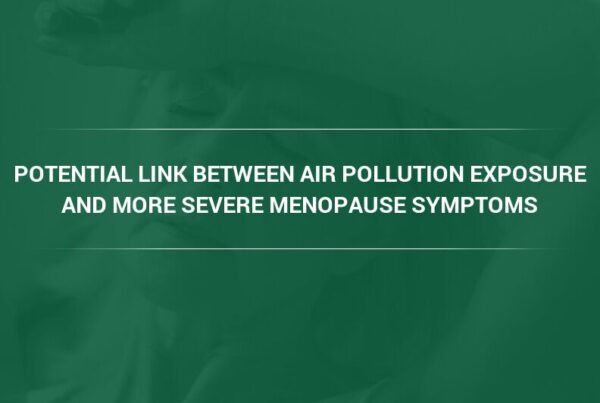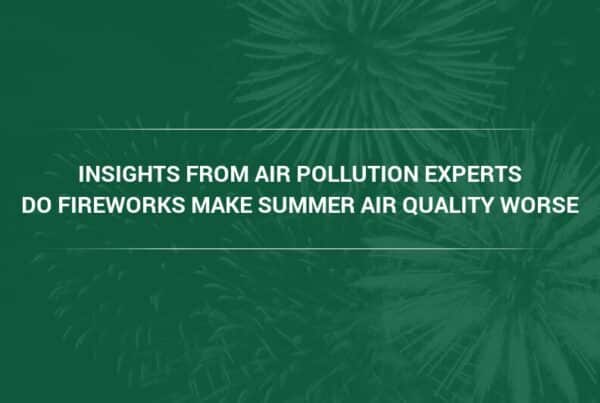Despite the tremendous efforts to make the air cleaner and safer to breathe since the 1970s, air pollution continues to be a major problem in the United States, impacting both the environment and public health. The latter is also the reason why high efficiency air filters are a much-needed addition in many homes and buildings. Air pollution, after all, can still affect indoor air quality.
How Policies and High Efficiency Air Filters Partner to Solve Air Pollution
Under the Clean Air Act, the United States Environmental Protection Agency (EPA) continues to work with state, local and tribal governments, as well as other federal agencies and stakeholders, to lower air pollution levels and mitigate their damage.
“Although technically passed in 1963, the Clean Air Act of 1970 (1970 CAA) was the first law to authorize the federal government and states to create regulations to limit emissions from both stationary sources and mobile sources of air pollution,” notes Camfil USA’s Charlie Seyffer, Manager of Marketing & Technical Materials for commercial air filters and 37-year ASHRAE member and active committee participant. “For more than 40 years, the Clean Air Act has proven time and again that protecting public health, building the economy, and keeping the air clean and safe can go hand in hand.”
Four major regulatory programs for stationary sources of air pollution arose from the law:
- The National Ambient Air Quality Standards (NAAQS)
- New Source Performance Standards (NSPS)
- State Implementation Plans (SIPs)
- National Emission Standards for Hazardous Air Pollutants (NESHAPs)
A Future Where Commercial High Efficiency Filters Are No Longer Needed to Fight Outdoor Air Pollution
The Clean Air Act has done much to reduce air pollution across the United States as the economy continues to grow, so much so that a time may come in the future when commercial high efficiency filters are no longer needed.
For starters:
- The Clean Air Act of 1970 has proven that protecting public health and growing the economy doesn’t have to be at odds with each other.
- Clean Air Act programs have succeeded in lowering levels of six common types of air pollutants:
- Particulate Matter (PM)
- Ozone
- Lead
- Carbon Monoxide
- Nitrogen Dioxide
- Sulfur Dioxide
- Between 1970 and 2015, aggregate national emissions of these six pollutants dropped by an average of 70 percent. Meanwhile, the country’s gross domestic product grew by 246 percent—a reflection of the efforts of state, local and tribal governments, the EPA, the private sector, and environmental groups among others.
- Reductions in emissions have naturally led to dramatic improvements in air quality. From 1990 to 2015, the national concentrations of lead have improved by 85 percent, 84 percent for carbon monoxide, 60 percent for nitrogen dioxide, and 67 percent for sulfur dioxide.
“Not surprisingly, these air quality improvements have allowed many cities, counties, and states in the country to meet national air quality standards and protect the public health and the environment,” said Seyffer.
How Heavily Polluted Cities are Coping Using Commercial High Efficiency Air Filters
Of the many U.S. cities dealing with poor air quality, Los Angeles perhaps offers the best example of what government intervention can do to solve the problem of air pollution. Yes, most homes and buildings in the Los Angeles-Long Beach area still require commercial high efficiency air filters to maintain safe indoor air quality levels. But even though L.A. ranks number 4 on the American Lung Association’s annual “State of the Air” report, it has actually made great strides in improving air quality in recent years.
Much, however, still has to be done. Los Angeles Mayor Eric Garcetti himself recognizes the dangers of air pollution on the health of his constituents, so much so that in 2017, he ordered city building inspectors to inspect whether air filtration systems were being installed in homes and buildings located along freeways, where air pollution tends to be the worst.
Teams from L.A.’s Department of Building Safety were deployed to determine whether buildings and dwellings were outfitted with the proper-strength air filters to prevent occupants and residents from pollutants found in car and truck exhaust. City Council also beefed up its building inspection systems to keep staff updated with air filtration and containment standards.
City Planning May Reduce Need for Commercial High Efficiency Air Filtration Systems
Los Angeles’s example of requiring commercial high efficiency air filtration systems in homes and buildings along freeways highlights the importance of city planning.
For example, a look at Oakland’s air quality maps shows that air pollution tends to vary from one location to the next. Local governments can leverage air quality information and emissions data to guide their city planning decisions in ways that protect residents from exposure to air pollution, for example, by ensuring that housing developments, hospitals, and schools among others are located away from places with high levels of air pollution—think freeways and industrial facilities.
Planning on this level could have prevented students in Camden, New Jersey from being exposed to high levels of disease-causing airborne pollutants. This type of exposure to students is an effect of the practice of constructing public schools on the cheapest plots of land, which are often next to industrial and manufacturing facilities, which produce pollution emissions.
Local and regional governments can also leverage air pollution data to guide their transportation planning efforts, while private companies can use this information in managing their freight activities.
Lastly, local governments can use this information and provide funding for the installation of air filtration systems in buildings located in highly polluted areas, just as Los Angeles has been doing.
Going Beyond Commercial Air Filtration Systems
Aside from the installation of commercial air filtration systems, it’s important to address the challenges that communities and countries face when trying to improve outdoor air quality, especially in urbanized areas.
As with many policy challenges, the key is knowledge. Sure, there’s a large body of literature on the health effects of outdoor air pollution as well as the possible policies to mitigate the problem altogether. But the common obstacle to policy development, especially when it comes to the problem of air pollution in cities, is the lack of access to information on air pollution levels and air pollution sources.
When it comes right down to it, there’s often a lack of awareness about the health dangers of outdoor air pollution in urban communities. It can be due to a gap in data from air quality monitoring, or a lack of appreciation of the possible solutions to improve air quality.
In other words, governments need to do a better job of arming their constituents with the information they need to make informed decisions about their lifestyles, which in turn, can help solve the air pollution problem.
One web site that addresses this problem is AirNow, developed by the United States Environmental Protection Agency (EPA). Residents of areas can view in almost real time the criteria pollutants in their area from monitoring stations located in most urban areas throughout the country.
The Importance of Not Settling for Commercial Air Purification Systems
While reducing exposure to air pollution—which is what commercial air purification systems do—is important and presents several critical benefits, cutting pollution emissions at the source is still the most powerful tool for protecting both the environment and public health over the long run. As the federal government, EPA, and other government agencies have shown, it’s policies and initiatives like the Clean Air Act and its related programs that have done the most to reduce levels of airborne pollutants.
In other words, there needs to be a bedrock of regulation and policies in place before real change can happen. When you have a top-level call for change, everything else falls into place.
If you are interested in learning about improving your indoor air quality with commercial air filtration systems from Camfil USA, contact us today and browse our catalog of air filtration systems.
Media Contact:
Lynne Laake
T: 888.599.6620



